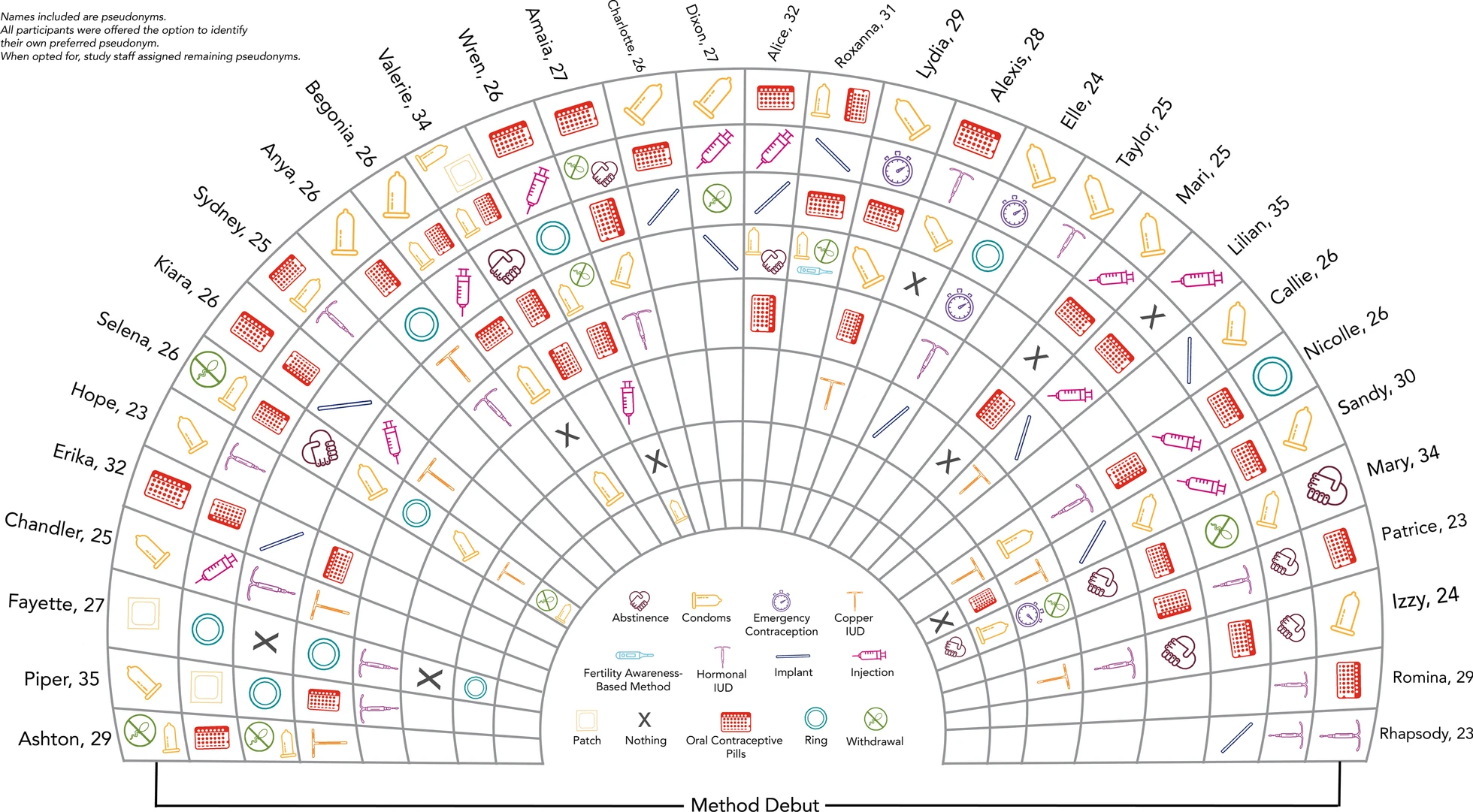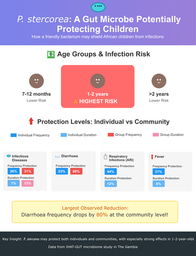Understanding Contraceptive Use Over Time: Insights from a Qualitative Study on the Contraceptive Journey
Published in Healthcare & Nursing, Public Health, and Paediatrics, Reproductive Medicine & Geriatrics

Background
The reproductive lifespan for people who can become pregnant can span approximately 35 years. During this time, the average individual in the United States will spend most of these years preventing pregnancy using contraception.
Current contraceptive decision-making research frequently concentrates on short-term aspects but might not offer a comprehensive picture, as it often neglects personal experiences and broader life contexts.
Our study's goal is to create a framework for understanding contraceptive decision-making across the entire reproductive life course. This could help improve research, policy, and counseling.
Methods
We interviewed 33 people of reproductive age who had received no-cost contraception through the HER Salt Lake Contraceptive Initiative in Utah. We asked them about their experiences with contraception over time, which we called their "contraceptive journey." We then analyzed these interviews using a flexible version of the grounded theory approach. This method involves looking for patterns and common themes in the participants' stories to help us understand how people make decisions about contraception throughout their lives.
Results
A person’s contraceptive journey occurred in four phases:
-
Deciding to use contraception
- Selecting and starting a specific method
-
Experiences with a method
- Stopping the method
Each stage had its own set of decisions and experiences. Participants saw these stages as distinct parts of their journey. For instance, they differentiated between deciding to use contraception and the process of choosing and starting a method. While these stages are interrelated, they represent different facets of a person's contraceptive journey, with experiences in one stage potentially shaping their feelings about the method in another stage.
Across all phases of the contraceptive journey, we identified five factors that most heavily influenced participant decision-making:
1. Physiological factors (health-related aspects):
a) “And my struggle with the IUD was that I remember looking up and I was just doing research and seeing, they said you typically have really bad cramps for six months or so… And I had really bad cramps for over a year…And it was awful. But I don’t know, just eventually it went away… I almost got it taken out a few times, but they kept telling me it was normal. And so I stuck it out. Now that I have none of the side effects, it’s fantastic” - Sydney, age 25
2. Values (personal beliefs, religious convictions, cultural influences, and pregnancy preferences):
a) “I don’t think it’s [hormonal contraception] is for every body and all the different types I’ve tried have told me that. Now I’m reading a really great book about fertility in women and your body and I’m trying to get better at the fertility awareness method. I’m just trying to be more in tune with my body instead of just ignoring it and fatlining everything.” - Roxanna, age 31
3. Circumstances (all external components including employment, geography, insurance status, etc.):
a) “The pill was the easiest for me to get and it was the cheapest. But what I didn’t like about it was that I often forgot to take it and forgetting would make me super anxious about getting pregnant afterwards. So I really wanted an IUD because then I wouldn’t have to think about it or worry about it for years. And so I was looking into that, but I saw the prices. It was over my budget. I remember it was super expensive. So I stuck with the pills because I wasn’t able to afford that.”- Sydney, age 25
4. Experiences (past encounters with contraception and broader life events):
a) “And then, when I started the pill, got married and had been on it for probably seven or eight months…I was taking a pathophysiology class and the professor told us a story of a girl who had just gotten married and was on the pill and had a stroke because she got a blood clot. And all of a sudden, I started getting super paranoid and nervous because I remembered I had a cousin who had, like, a blood clot when she was pregnant on an airplane. And so, I like couldn’t stop thinking about it, decided to go get my blood tested for it and it turns out I did have it…so then the doctor was like, “Okay you should not be on this pill because there’s estrogen in it and the chances of a blood clot were really high.” —Alexis, age 28
5. Relationships (connections with partners, healthcare providers, friends, and family):
a) “Initially I liked it [vaginal ring]. But I just had really bad depression on it and it was my freshman year in college and I was just so depressed on it and it really decreased my libido. So I was having all these issues with it, so my stepmom was just like, “it takes your body a little while to acclimate, so just try to keep it in.” - Selena, age 26
Conclusion
Individuals' contraceptive journeys were shaped by various life factors. Most participants, even young adults (18-24), had tried multiple methods (Fig 1.), adjusting to their evolving needs. Their contraceptive choices were influenced by past experiences, reflecting a continuous process of evaluation and adaptation.
Participants' stories highlighted the complexity and dynamic nature of contraceptive decision-making. They stressed that no single method fits everyone and urged healthcare providers to be open-minded, consider broader life contexts, and adopt a holistic approach when discussing contraception options.
Figure 1.

The graphic depicts contraceptive journeys of study participants, with initial methods on the outer circle and subsequent methods in inner rings. Selena (26) reported seven additional methods used: combined oral contraceptives, condoms and withdrawal, progestin-only pills, copper IUD, progestin-only pills, condoms/withdrawal/emergency contraception, and combined oral contraceptives.


Please sign in or register for FREE
If you are a registered user on Research Communities by Springer Nature, please sign in